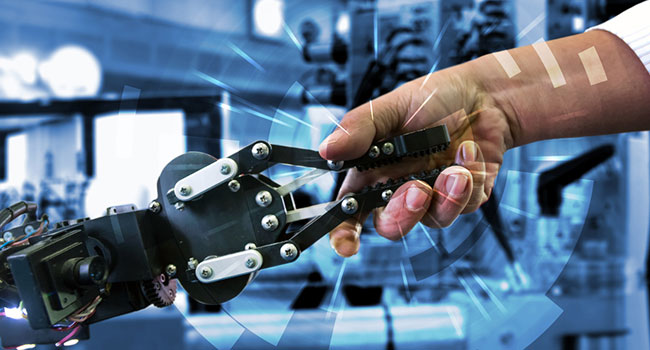
Industrial Robots IoT Cybersecurity Nightmare
Nearly 50 vulnerabilities have been found in industrial collaborative robots which can be configured enable the robots to spy on their surroundings or cause physical harm to workers
Nearly 50 vulnerabilities have been found in industrial collaborative robots – machines that work side-by-side with humans in manufacturing settings – which can be configured enable the robots to spy on their surroundings or possibly cause physical harm to workers.
The researchers at IOActive who discovered the vulnerabilities, Cesar Cerrudo and Lucas Apal, said the collaborative robots, or “cobots,” can be remotely tampered with to alter safety configurations that, for example, prevent them from operating outside a designated safety boundary.
Cobots can learn movements, “see” through built-in cameras and “hear” through microphones, which the researchers said can all be accessed, opening up possibilities for commercial espionage.
“These new collaborative robots are smarter and can do a lot of different things. There, the threat is different,” Cerrudo said. “Once they are hacked, they have a lot of people around them; you’re talking about really powerful robots that can lift a lot of weight. It’s very possible they can end up seriously hurting a person.”
In their initial research published in February, titled “Hacking Robots Before Skynet,” Cerrudo and Apa studied publicly available firmware and software to learn how these machines work, learning their ecosystem, how they connect to local networks, including other robots, as well as to their respective vendors, including to cloud-based update systems.
IOActive published a paper this week building on the initial cobot research, further explaining technical details on the vulnerabilities and proof-of-concept exploits. They also included demonstrations and called out Universal Robots for failing to patch their machines’ major problems, including authentication, memory corruption and insecure communication vulnerabilities, since the company was privately contacted by the researchers in January.
“Right now, [cobots] are very insecure. If we don’t do anything about it and improve the security, then it will be a complete mess,” Cerrudo said. “They can end up doing really nasty things. The same problems you are seeing right now with IoT that are causing losses and being hacked every day will be 10 times worse with robots. They can move around, grab things, damage property, have camera, microphones, so the threat is a lot bigger.”